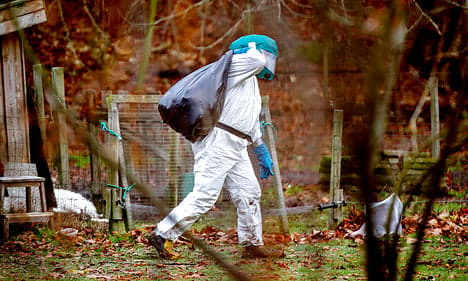Exports threatened after bird flu found in Danish poultry

The aggressive bird flu H5N8 that was reported in wild ducks last week has now been found on a Danish poultry farm.
The Danish Food and Veterinary Service (Fødevarestyrelsen) said on Monday that tests from a duck farm in northern Zealand confirmed the presence of the virus. Roughly a third of the farm’s ducks have died as a result.
The case marks the first time that the bird flu has been confirmed amongst domestic poultry since it was discovered in wild ducks earlier this month.
The national poultry association, Det Dansk Fjerkræråd, said that the discovery of H5N8 threatens to put a serious damper on exports.
“It can be a major blow to the industry. I'm kind of in shock. Just how big the loss will be, I cannot yet say,” association spokesman Jørgen Nyberg Larsen told Ritzau.
According to Larsen, a number of countries outside of the EU institute an automatic stop to imports of Danish poultry as soon as there is a confirmed case of bird flu.
“It’s typically some of the countries we do business with in the Middle East and Far East that will close the borders. Nearly 100 percent of the offal, feet and shell eggs we export are sold there,” he said.
Larsen said the industry would be “lucky” if exports only shut down for one month but he said it could last up to six months.
The Danish Food and Veterinary Service said that the bird flu is normally not spread to humans but it has ordered poultry farmers to keep all hens indoors until the new year.
The agency believes that the bird flu entered Denmark via Germany. There have also been confirmed reports of H5N8 in Austria, Switzerland, Hungary and Poland.
Comments
See Also
The Danish Food and Veterinary Service (Fødevarestyrelsen) said on Monday that tests from a duck farm in northern Zealand confirmed the presence of the virus. Roughly a third of the farm’s ducks have died as a result.
The case marks the first time that the bird flu has been confirmed amongst domestic poultry since it was discovered in wild ducks earlier this month.
The national poultry association, Det Dansk Fjerkræråd, said that the discovery of H5N8 threatens to put a serious damper on exports.
“It can be a major blow to the industry. I'm kind of in shock. Just how big the loss will be, I cannot yet say,” association spokesman Jørgen Nyberg Larsen told Ritzau.
According to Larsen, a number of countries outside of the EU institute an automatic stop to imports of Danish poultry as soon as there is a confirmed case of bird flu.
“It’s typically some of the countries we do business with in the Middle East and Far East that will close the borders. Nearly 100 percent of the offal, feet and shell eggs we export are sold there,” he said.
Larsen said the industry would be “lucky” if exports only shut down for one month but he said it could last up to six months.
The Danish Food and Veterinary Service said that the bird flu is normally not spread to humans but it has ordered poultry farmers to keep all hens indoors until the new year.
The agency believes that the bird flu entered Denmark via Germany. There have also been confirmed reports of H5N8 in Austria, Switzerland, Hungary and Poland.
Join the conversation in our comments section below. Share your own views and experience and if you have a question or suggestion for our journalists then email us at [email protected].
Please keep comments civil, constructive and on topic – and make sure to read our terms of use before getting involved.
Please log in here to leave a comment.